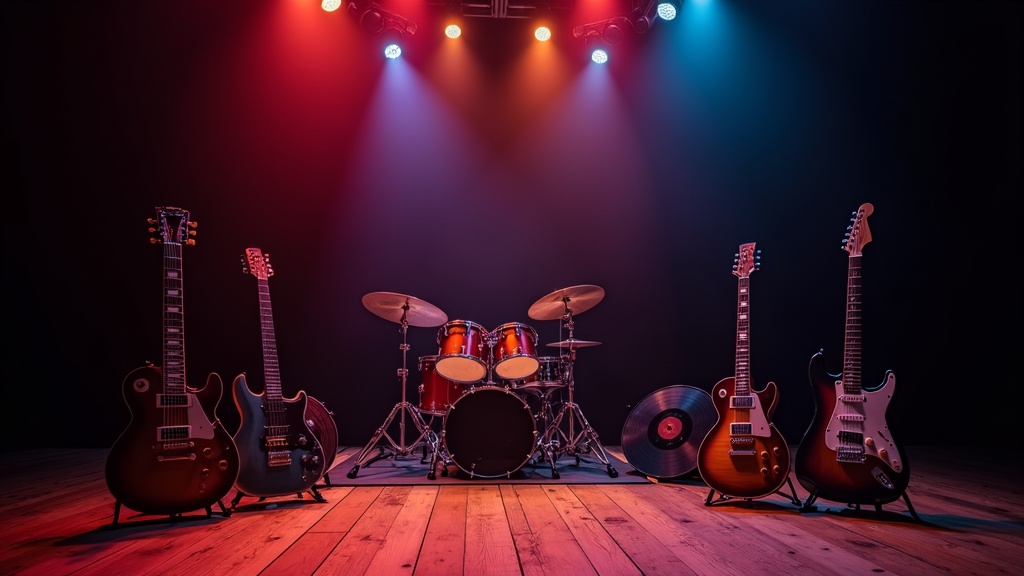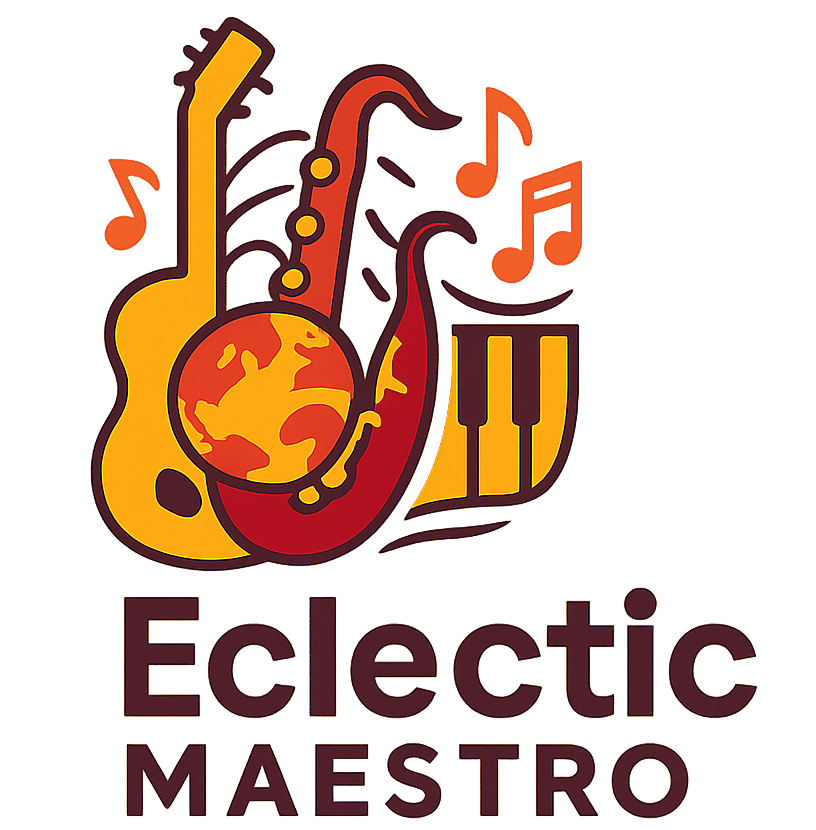Rock and roll wasn’t just a new style of music. It sparked a revolution that spread far beyond the radio. With its raw energy and wild rhythms, rock and roll brought people together, changed what was “cool,” and set the stage for the ways we listen to music today. In this article, I’ll walk you through how rock and roll shook up the music world and made its impact lasting and unforgettable.

The Birth of Rock and Roll: Where It All Started
Rock and roll officially burst onto the scene in the early 1950s, and it really mixed things up. Before this, popular music in the U.S. mostly meant big band swing, smooth jazz, and old school crooners. Rock and roll took pieces from rhythm and blues, gospel, country, and even some jazz, stepping up the intensity and attitude.
Artists like Chuck Berry, Little Richard, and Elvis Presley blended all these influences with a driving backbeat and electric instruments. The result? A sound that felt totally fresh. Energetic, bold, and perfect for dancing. This wasn’t just music for listening in your living room. It was made for moving, sweating, and sometimes even causing a little trouble.
Radio DJs and independent record labels played a big part in pushing rock and roll onto the airwaves. Alan Freed, a DJ in Cleveland, is often credited with popularizing the term “rock and roll.” He championed these rebellious new sounds and brought together audiences that had often been separated by race. This switch up didn’t just make for good tunes; it started breaking down cultural barriers, too.
How Rock and Roll Changed Music Styles and Attitudes
Before rock and roll rolled in, there were strict unwritten rules about what “good” music was supposed to sound like. Songs were tightly arranged, performances felt polished, and singers mostly stuck to safe, familiar territory. Rock and roll flipped all that upside down, and I’ve always found its fearless attitude pretty contagious.
- Raw Energy: The electric guitar riffs, pounding drums, and shoutalong vocals gave audiences something brand new. Songs were shorter and punchier, making them perfect for young folks eager for something faster and louder.
- DoItYourself Spirit: You didn’t need fancy training or a polished background to be a rock and roll star. This inspired anyone with a cheap guitar or set of sticks to start a band. Garage bands began popping up everywhere, and people realized music could be personal, homegrown, and revolutionary.
- Lyrical Honesty: Rock and roll lyrics got straight to the point. Instead of love songs in flowery language, now you heard stories about rebellion, heartbreak, happiness, and real life. This directness made songs more relatable, sparking personal connections with listeners.
One key thing to point out here is that rock and roll also changed the expectations of performance. Suddenly, musicians could move on stage, shout, even put on a little chaos. That kind of expressiveness would eventually bleed into other genres, leading to even more dynamic live shows. Rock and roll didn’t stick to the scripts of the old music world and invited experimentation and authenticity. This little revolution didn’t just give people a new soundtrack; it changed how people thought about making music itself.
Breaking Barriers: Rock and Roll’s Social and Cultural Impact
Rock and roll didn’t just give music a makeover. It tore down walls that kept people separated. One thing that stands out in rock’s early days is how it brought young people together, regardless of background.
The mix of Black rhythm and blues with White country music challenged segregation in the United States. Concerts and radio shows drew audiences that rarely crossed paths before. Seeing icons like Elvis Presley borrowing moves and styles from Black artists inspired conversation and, eventually, opened more doors for musicians of all backgrounds.
For teenagers, rock and roll was more than a soundtrack; it became a symbol of independence. Parents worried about its “dangerous” influence, which only made it more appealing. This helped kick off the first real generation gap, as young fans used the music to claim their own identity and push back against the status quo. Fashion, haircuts, and dance crazes followed, changing youth culture forever.
Rock and roll also spread fast among different regions and classes, making it a unifying force. Small towns felt the tremors just like big cities did. Folks who had felt left out of the cultural conversation now had something in common with fans far away. Rock and roll’s infectious spirit meant everyone could join in—even if they looked, dressed, or spoke a little differently than the so-called “mainstream.”
Rock and Roll’s Influence on the Music Industry
The music business had to catch up fast with how quickly rock and roll was growing. Here are some pretty big changes that still matter today:
- Record Labels and Innovation: Small, independent labels found their shot by signing boundary pushing rock talent. Labels like Sun Records and Chess Records took chances on artists who didn’t fit neatly into any one genre, and that risk helped spark a flood of creativity.
- Radio and TV Exposure: Radio stations started creating programming just for young listeners hungry for new tunes. American Bandstand and other TV shows brought rock and roll stars into living rooms across the country, turning singers into teenage idols overnight. This gave artists a reach their jazz and swing era peers never dreamed of.
- Concert Tours and Fan Worship: With rock and roll, concerts became huge, sometimes chaotic events. Fans—even from small towns—suddenly got to see their idols up close. Live performance became essential to an artist’s career and helped cement the idea of music as both a social event and an experience.
An added bonus for the industry was the birth of merchandise and fan clubs. Clever marketing teams jumped at the chance to sell t-shirts, posters, and collectibles, turning musical acts into full-blown brands that reached far beyond just the stage or the radio. The model set back then survives today—just look at how big the business is around modern music stars.
From Roots to Modern Music: The LongTerm Legacy
Rock and roll’s DNA is everywhere in music today. Most modern genres trace at least some of their flavor to what rock and roll started; pop, hiphop, punk, indie rock, heavy metal, and singersongwriter tunes all carry the influence.
Electric guitar, bass, and drums are now standard for all types of bands. Music videos, wild performances, and “the look” of musicians are just as important in pop and rap as they were in classic rock. Even the idea of writing raw, personal lyrics became standard for artists in every genre, from Taylor Swift to Kendrick Lamar.
Rock and roll also brought the concept of the “album” to the front. Instead of just hits and singles, fans started caring about the full body of work from an artist. The Beatles, Rolling Stones, and others took this to another level. This shaped not just what we hear, but how we talk about music, collect it, and celebrate it. The emphasis on artistic vision and album storytelling has stuck around. Today, many artists release “concept albums” or carefully planned collections, all tracing their roots back to the way rock and roll redefined what an album could be.
Some Big Rock and Roll Moments That Shook the World
- Elvis on The Ed Sullivan Show: More than 60 million people tuned in to see Elvis perform in 1956. His dance moves and energy shocked the older generation but made him a hero to young fans everywhere.
- The Beatles on U.S. Soil: When The Beatles debuted on American television in 1964, “Beatlemania” swept the country, proving just how global rock and roll—now “rock”—had become.
- Woodstock Festival: In 1969, hundreds of thousands of fans showed up to hear artists like Jimi Hendrix and Janis Joplin. This event made live concerts and outdoor festivals an important part of music culture.
Of course, there were many other eye catching moments: the rise of MTV, Queen’s massive performances, David Bowie’s wild persona, or Nirvana’s grunge revolution. Each of these added another chapter to the story and brought new fans into the fold.
What You Might Want to Know About Rock and Roll
Here are a few questions I hear a lot from friends and fellow music fans when we get into how rock and roll changed everything:
What’s so different about rock and roll compared to what came before?
Rock and roll delivered a raw, fast paced energy and direct lyrics. It relied on electric guitars, pounding drums, and an attitude that encouraged breaking rules. Earlier styles played it safer with slower beats and more filtered lyrics.
How did rock and roll help break down social barriers?
The mix of influences, crossover appeal, and shared love for new sounds helped connect people across race, geography, and economic lines. This didn’t just change who played music; it changed who could listen and enjoy it together.
What are some bands or artists today that carry on the rock and roll spirit?
It depends on what you’re into! Groups like Foo Fighters and The Black Keys stick close to classic rock. Pop stars like Harry Styles and Miley Cyrus borrow a lot from rock and roll’s unpredictable energy. In rap and hiphop, the rock “rebellion” and raw lyrics live on.
Why Rock and Roll’s Legacy Matters
Rock and roll showed that music isn’t just background noise; it can challenge, connect, and inspire. Its shakeup of musical styles, attitudes, and industry rules turned it into a constant source of inspiration for musicians everywhere. If you look at the music scene today—whether at a festival, a fast paced playlist, or an intense fan debate—you’ll see the original spirit of rock and roll echoing through. The story of rock is really the story of how music stays surprising, personal, and alive, even after all these years.
